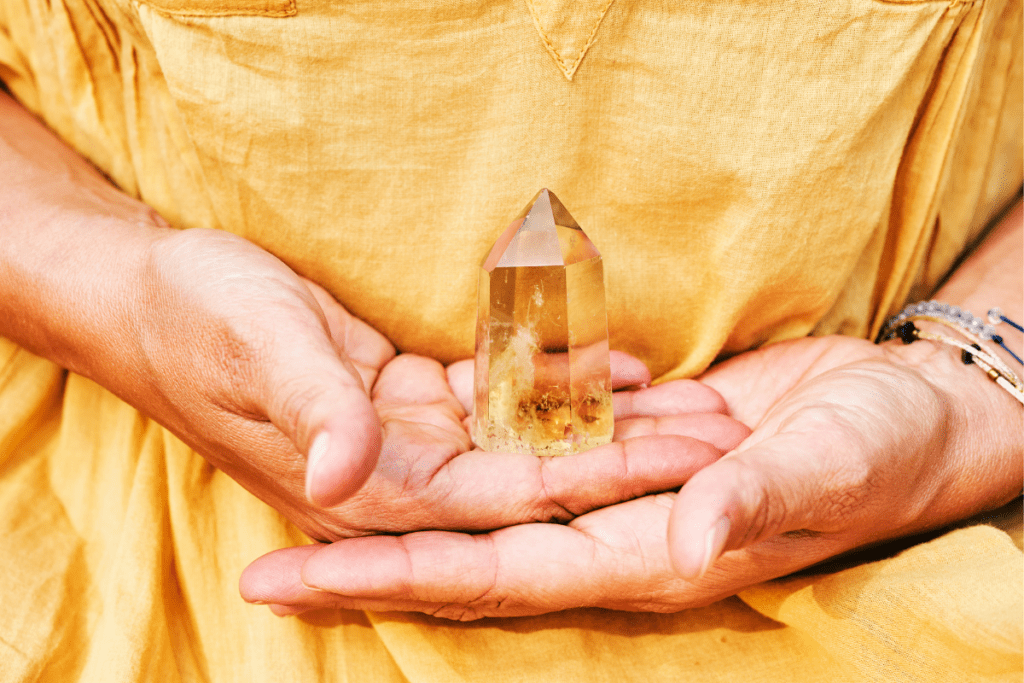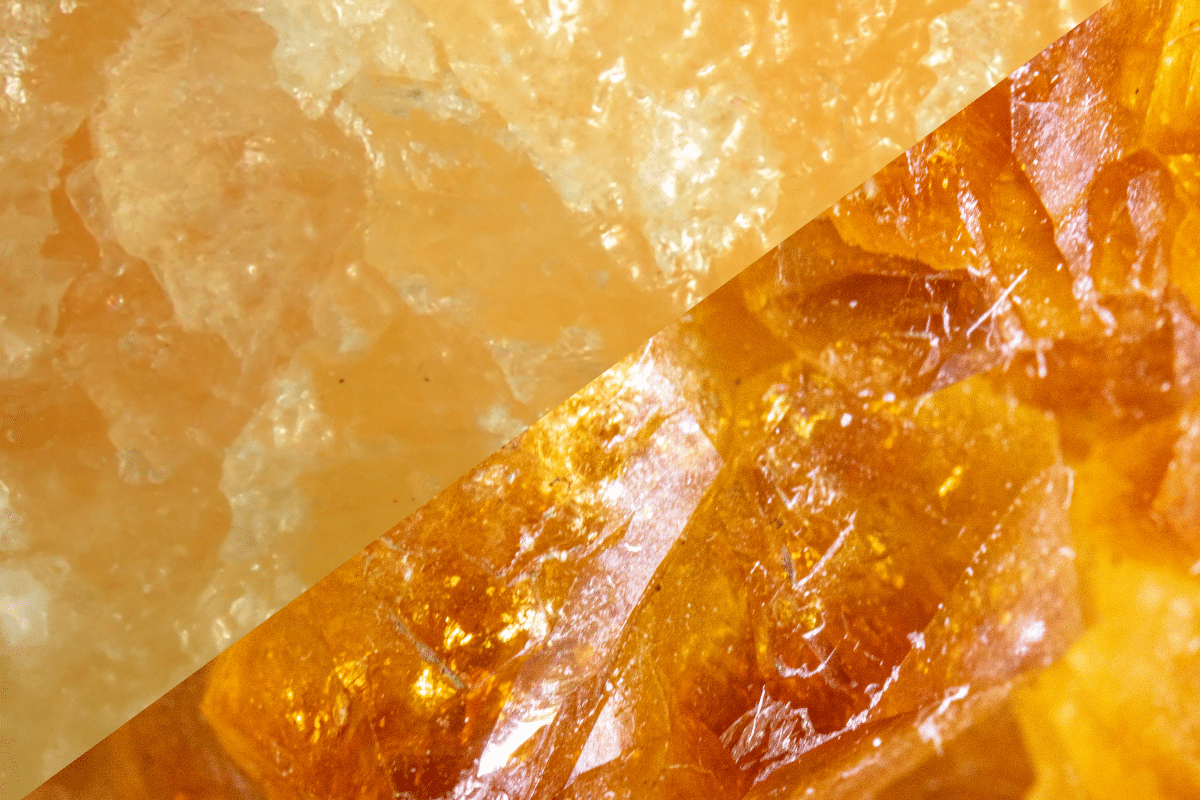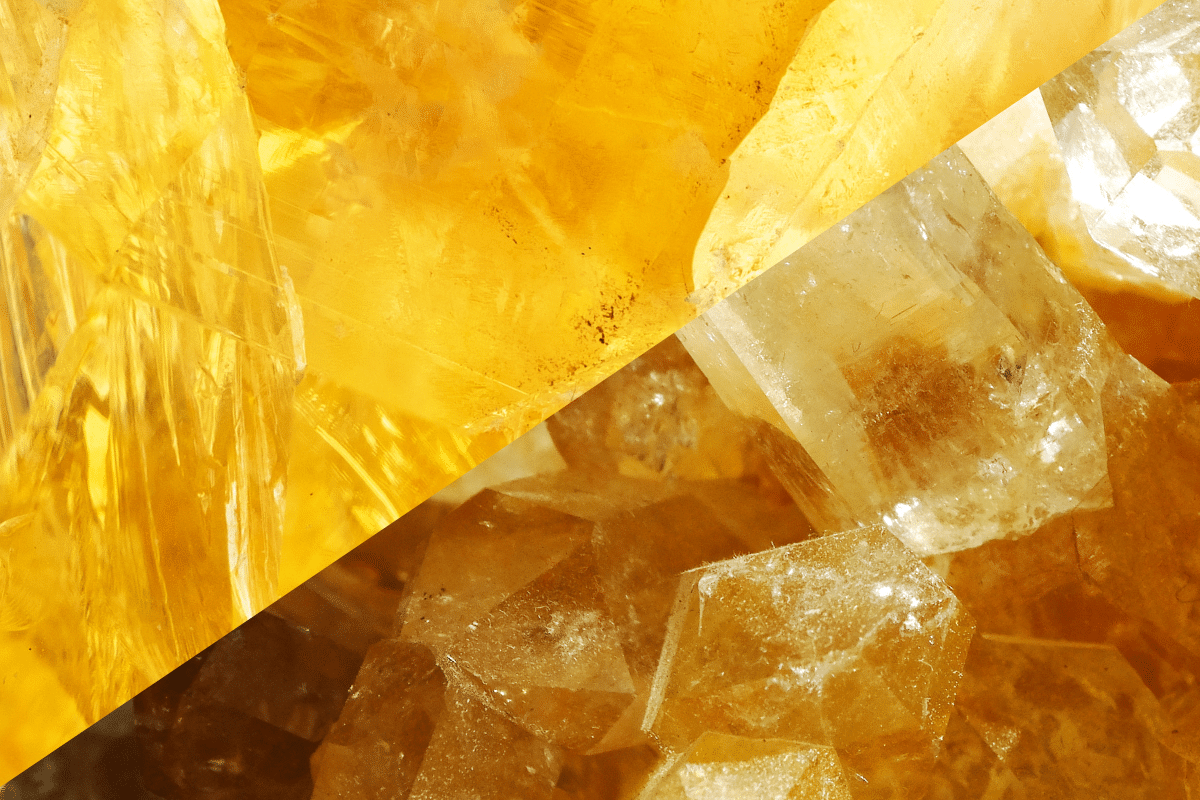What Chakra Is Citrine? (Full Guide)

Crystals work best if we know how to work with them effectively, and part of this is knowing which chakra your stone is related to. Below you’ll find all the information you need about Citrine in general, as well as the different types.
Citrine is most commonly associated with the solar plexus chakra (Manipura), located above the navel. However, it is also associated with the sacral chakra, found below the navel.
Continue reading if you want to know more about Citrine’s related chakras, as well as how to use it.
Want more help or information? If you have any more questions after reading this blog post or want a personal answer for your specific situation, join the free Facebook group! We promise you’ll get an answer from either our team members or a community member.
Also Read: The Complete Guide To Citrine And The Zodiac Signs
What Chakra Is Citrine? (Explained)
Citrine is associated to the sacral and solar plexus chakra for two reasons: its abilities as well as its color.
As you might know, each chakra represents a different part of ourselves and every crystal has different abilities to help in those areas. There are 7 chakras, which you’ll find below, from lowest to highest.
- The root chakra (Muladhara): our sense of stability and security.
- The sacral chakra (Svadihsthana): the emotional body, sensuality and creativity.
- The solar plexus (Manipura): self-esteem and your overall personal power.
- The heart chakra (Anahata): love, for ourselves and the world around us.
- The throat chakra (Vishuddha): communication, self-expression and trust.
- The third eye chakra (Ajna): our intuition, perception and overall awareness.
- The crown chakra (Sahasrara): the connection to the divine, transformation and clarity.
Citrine is a stone that fills anyone that works with it with warmth and joy. Citrine has the ability to make anyone feel more creative and full of life. It is also a stone that helps us feel more confident and strong, ready to take on everything that life brings us. As a result, we associate citrine with the sacral and solar plexus chakra.


Citrine can help open up your sacral and solar plexus chakra and is a great stone for anyone looking to heal their this part of their life.
Apart from its abilities we can also look at the color. As every chakra has its own color, we can simply match a crystal to the chakra:
- The root chakra is red, but black stones are also a good match.
- The sacral chakra is orange.
- The solar plexus is yellow.
- The heart chakra is green, but also matches with pink stones.
- The throat chakra is blue.
- The third eye chakra is indigo.
- The crown chakra is violet, but also matches with stones that are clear or white.
As you can see, the orange-y yellow citrine matches perfectly with the sacral and solar plexus chakra.
Continue reading if you want to know the benefits of citrine to the chakra and where to place citrine on the body for it to be most effective.
- Also Read: Can Citrine Be In The Sun?
Citrine Benefits To The Sacral and Solar Plexus Chakra
A blocked sacral chakra can manifest in different ways.
Physical issues manifest in the area of the sacral chakra; the lower abdomen. Think of issues with the reproductive system, urinary or kidney problems, and hip and lower back pain. Emotionally, you might feel detached, lonely, or a lack of creativity. You may also find yourself having a low libido
Additionally, a blocked solar plexus can show itself through a lack of motivation and joy, as well as low self-esteem and trust. Physical signs manifest in the area of the solar plexus; the abdomen. Examples are stomach pain, heartburn, nausea, and a low appetite.
- Also Read: Can Citrine Go In Salt?
As citrine connects to both of these chakras, it can help unblock and heal these issues. Working with citrine means you’re likely to feel more motivated to work on projects you’ve been wanting to finish as well as feel the confidence to know you can do it.
Please beware, crystals are never a replacement for medical help. Always go to a doctor if you experience serious issues. You can then work with your citrine to support treatment.
Where To Place Citrine On The Body?
Where you put your citrine completely depends on what you use it for. Below you’ll find some guidelines for both jewelry as well as meditation, depending on what you are looking for.
As a general rule, it is best to keep the stone on the skin closest to the appropriate chakra. If you are meditating with the citrine and like to lie down, just place it on stomach. You can also keep it in your hand if you prefer.

Be careful about which hand you hold it in; there are two different opinions on this.
Some say the left hand is your receiving hand, whereas your right is your giving hand. Depending on what you are looking for from your crystal, you can place it on either of those sides. In this case, this left-in and right-out is just the flow of energy through the body which never changes.
- Also Read: The Complete Guide To Wearing Citrine
Others however, believe that this flow of energy changes depending on if you’re left or right-handed. Your dominant hand (the hand that you write with) is your giving hand and releases energy. Your non-dominant hand is the receiving hand.
You can place citrine on either side, depending on what you are looking for. Do you want to ignite your passion (receiving hand) or would you like to be courageous or confident (giving hand)?
As you can see, there are some different views. Personally, I would recommend trying out both sides and see how you feel. Crystals are meant to be used intuitively, so use this to determine which side works for you.
If you prefer to wear it as jewelry, a bracelet or ring is going to be your best option. If you really want to wear it as a necklace, this is fine too but make sure you wear it on your skin and the chain is long.







11 Comments